ENVE SES Aero Bar
There’s someone new on the aerobar scene. They hail from Ogden, Utah, and are better known for their wheels, forks, and frame tubes. Who is it? None other than ENVE Composites.
While I’m certainly familiar with their name, I haven’t used a single ENVE product until now. In a way, it’s a good thing. I had no idea what to expect, and no assumptions about anything. The aerobar game is a crowded room, becoming increasingly segmented by new bikes that feature integrated bars and stems. Additionally, many frames now rely on the aerobar to make up for its lack of fit adjustability – the bar does it all and makes the bike fit your required coordinates.
Does ENVE’s new SES bar cover all the bases and knock it out of the park? Let’s find out.
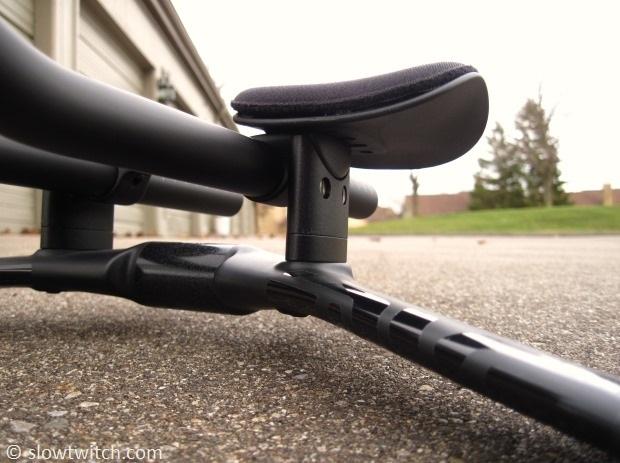
Specs and Features
The ENVE SES Aerobar comes in a flat package that arranges all of its pieces beautifully:
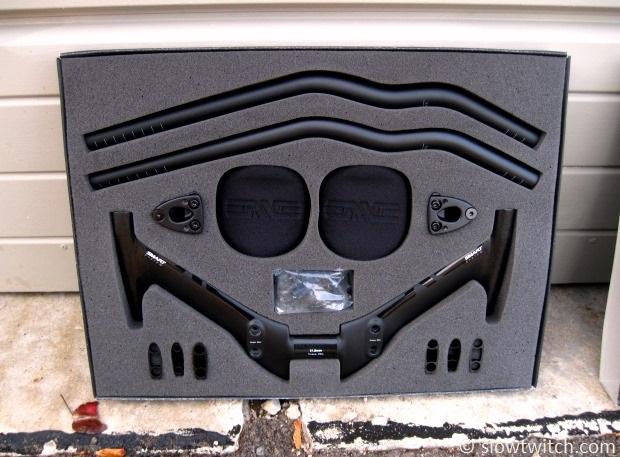
There is only one SKU (stock keeping unit) for this bar. It comes in one size, and includes all of the risers/bolts that you see. There are no options outside of what is in the box.
ENVE SES Aero Bar basic specs:
MSRP: $1,365 including extensions
Weight: 650 – 800 grams, depending on extension length and setup
Base bar width: 40cm Center-to-Center, 39.5cm measured
Base bar drop: Reversible +/- 21mm
Pad spacer heights: 5, 10, 20mm (stackable)
Extension diameter: 22.2mm
Extension angle adjustment: +/- 15 degrees
Pad maximum height above stem clamp center: 102mm measured
Pad minimum height above stem clamp center: 29mm measured
Pad maximum width: 20cm quoted, 19cm measured
Pad minimum width: 12.5cm quoted, 11cm measured
Components compatibility: Mechanical or electronic
Stem clamp diameter: 31.8mm
Accepts standard plug-in brake levers, including Magura hydraulic
UCI legal: Yes
The base bar features a 21mm reversible drop. That means – yes – you can flip the bar upside down for a ‘positive drop’. To me, that is a big selling point. I cringe when I see an amateur triathlete racing an Ironman with a base bar that is far too low for them. They bought the super-duper bike with a low head tube, and jack the arm pads up to hit their height requirement – but completely ignore the base bar. While 21mm isn’t a huge amount of rise, it is better than nothing (and much better than a deep drop bar on such a bike). The bar also has a curiously sharp forward sweep – presumably for appearance – but this could also make the reach too far for some folks.
Here is the bar in standard ‘flipped down’ configuration. Note the brake cable holes at the rear of the bar:
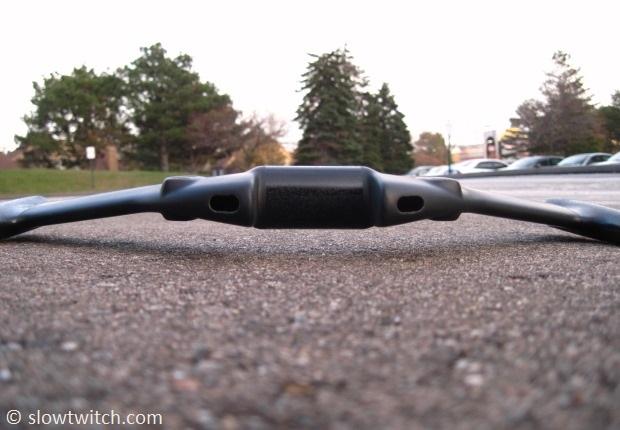
The extensions also offer internal routing, with several cable port holes available. Cables exit at the rear of the extensions through a special plug.
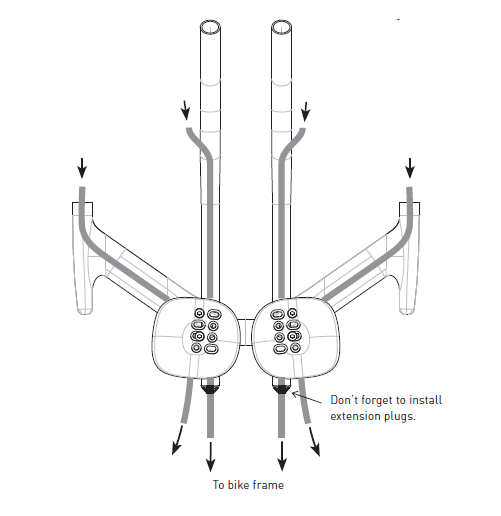
The heart of the system lies in two aluminum clamps. These are what 1) hold the aero extensions, and 2) attach the aero extensions to the base bar.
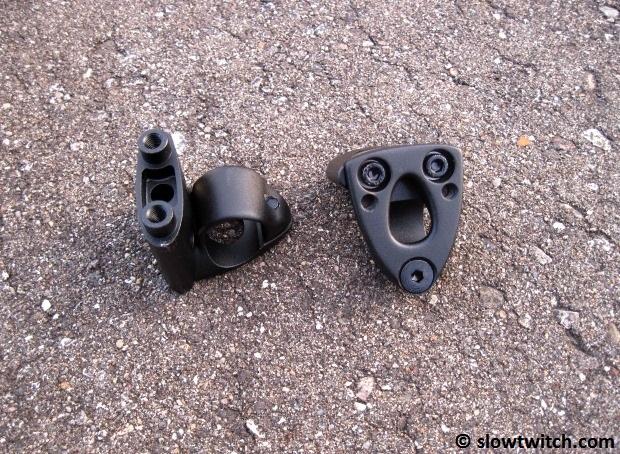
As you can see, the base bar has two pairs of holes to which the clamps mount. These holes are bored symmetrically, allowing for the extensions to be mounted above or below the base bar:
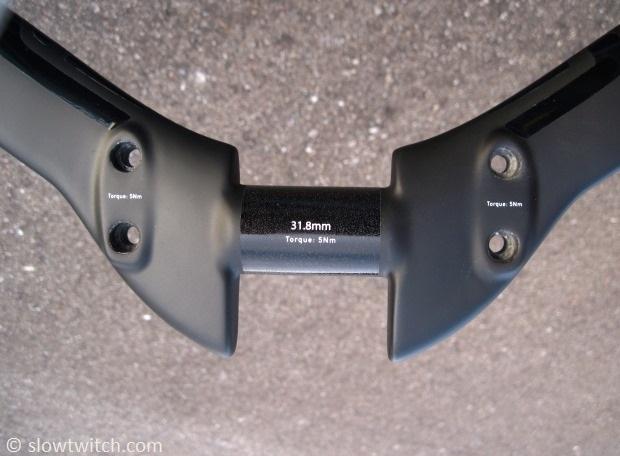
The clamps also allow for adjustment of the extension angle – up to 15 degrees in either direction (e.g. up or down). Note that the silver things that look like flathead screws are not adjustable – they are the inserts that the angle adjusting bolts thread in to. Don’t be a dope like me and try to wail on them with a screwdriver.
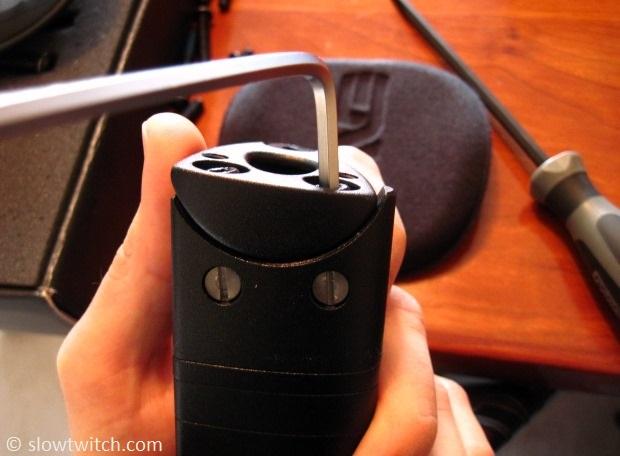
Here are the key parts that allow for adjustability. First, we have two pairs of stackable risers – 5mm, 10mm, and 20mm. These risers mount under the extension clamps, so the pads and extensions travel together.
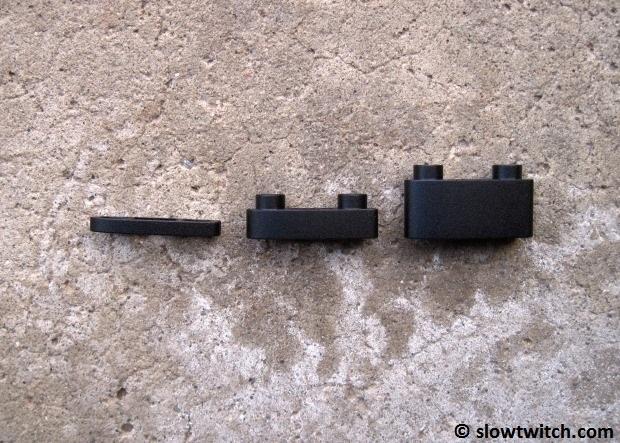
Those, along with four bolt lengths and two washer sizes, allow a big range of adjustability in pad height.
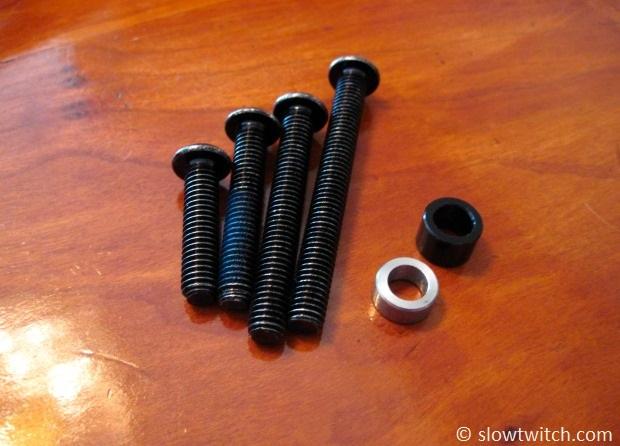
There are also four short 10mm bolts that are used to mount the pad carriers in the over-bar position.
Setup and Measurements
Before deciding whether I wanted to put this bar on my bike, I wanted to mock up a few configurations and take some measurements. I’m historically a fan of separate base bar and clip-on systems rather than integrated bars like this ENVE, but am willing to be swayed if the fit range is good.
ENVE advertises a ‘Pad Stack Height’ range of 15-90mm. What they don’t tell you on their website, unfortunately, is what that means. What is the starting and ending point of the measurement? This chart is in the product’s instruction sheet:
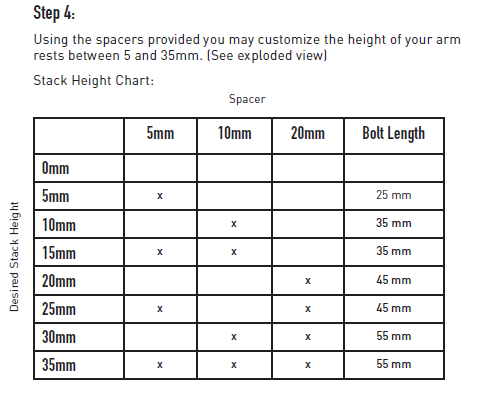
Also keep in mind that the extension clamps have a stack height of their own, which is not on the chart. I measured it at about 38mm. In addition, the pad and pad carrier together measure about 18mm:
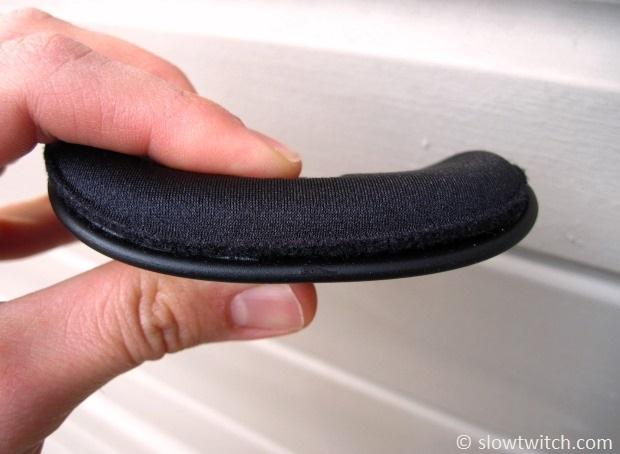
The aerobar industry has struggled to establish standards for what stack height means. We’ve written about this at length before, and the Slowtwitch-approved method is this:
PAD STACK = Center of the stem clamp (a.k.a. ‘bar bore’) to the top of the aerobar pad – including the actual pad material
There is some gray area due to the fact that not all pads compress the same amount – and that a heavy person compresses them more than a light person – but we feel it is the best representation today.
I decided to set the bar up with one side at the lowest possible configuration, and the other side at the tallest possible configuration, to see what my tape measure could tell me. On my low side, I found that the 25mm bolt length must be used:
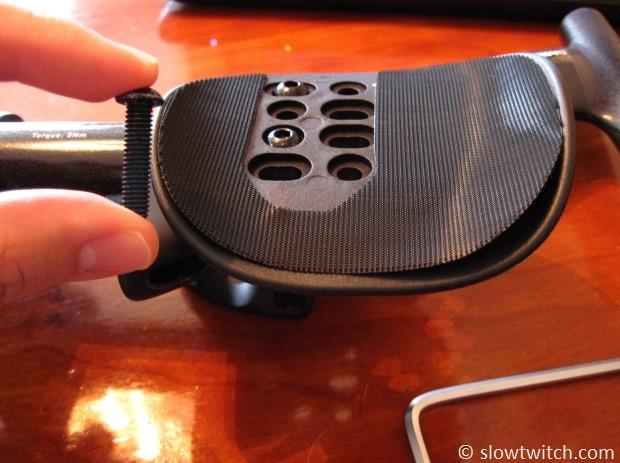
This puts the pad right on the bar. The actual mounting point is, according to ENVE’s Jake Pantone, about 7mm below the top of the 31.8mm stem clamp. Do you hear that? It’s a crowd of super low-riding time trialists cheering for joy. While it may exist, I’m not aware of any other 31.8mm bar that offers mounting this low.
On my tall side, I stacked up all of the risers and used the longest bolts. Note that you must use the small silver washers on the bolts in this configuration:
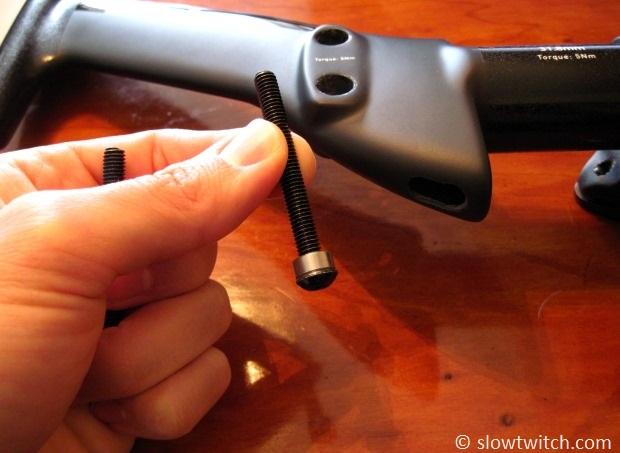
With everything bolted down, here is my high-low bar:
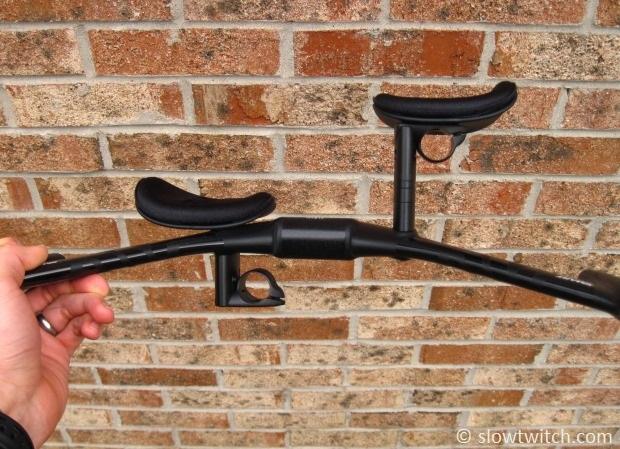
I took the following measurements with a tape measure, so consider them to be +/- 1mm or so.
HIGHEST STACK: 102mm
LOWEST STACK: 29mm
LOWEST STACK IN ‘OVER-BAR’ CONFIG: 68mm
Remember – this is center of stem clamp to the top of the arm pad.
What does that mean? Those numbers in themselves don’t mean that the bar is good or bad. It means that they fit those ranges. The important thing to note is the difference between the low stack (29mm) and the lowest possible stack with the extensions over the bars (68mm). At almost 4cm, that’s a big jump. If you need a stack number between those two, you must make up the difference with headset spacers or a different stem.
Just for a comparison, the Zipp Vuka Alumina Clip has a minimum height of 37mm, and a maximum height of 110mm. Its lowest stack in the over-bar position is 60mm. The ENVE can go a little bit lower, the Zipp can go a little bit higher, and the Zipp has a smaller jump between the two closest over/under bar positions. For all of the over-bar positions, the ENVE bar has smaller jumps between each setting.
I also wanted to check out how ENVE did with the height relationship between the aerobar pads and extensions. This is critical to a bar’s comfort, and can be easily overlooked. I was really curious to see if one extension could do it all.
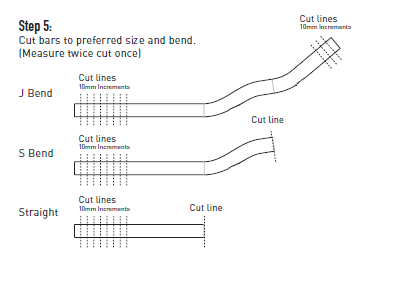
You want cut lines? You got ‘em:
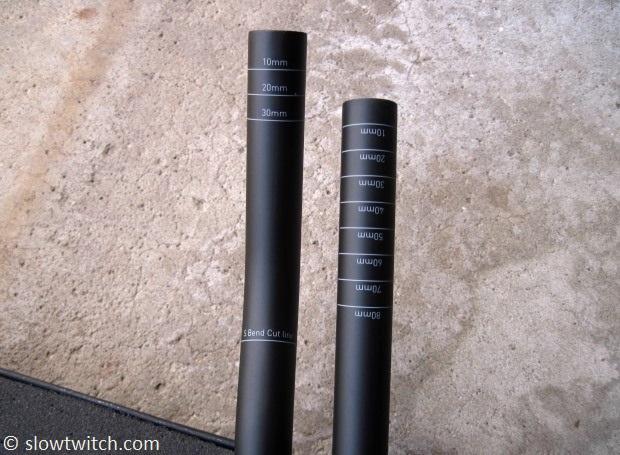
While bars such as this are very clever in allowing the user to route the extensions above or below the base bar, there is a consequence – the pad/extension height relationship changes. I’ve had issue with this in the past with my Zipp Alumina, which I set up in the under-bar position. To make a long story short, the extensions were very low beneath the bar, and I had to flex my wrists an uncomfortable amount to grab on to them.
With the ENVE bar, I found that the case was similar. This photo – crude as it is – shows how my wrists would have to sit in order to use a straight extension in the under-bar configuration.
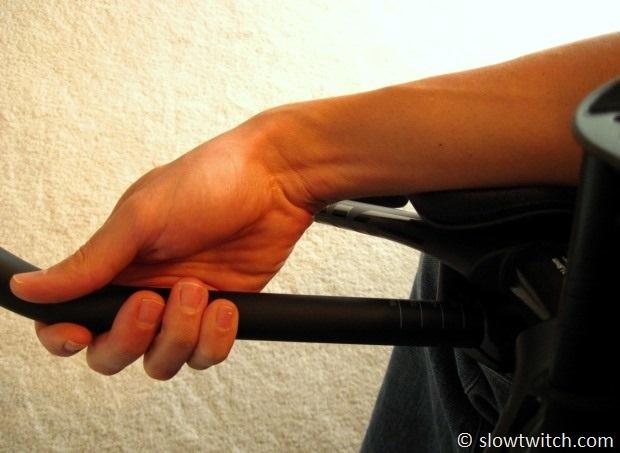
I think that the best extension style for the under-bar setup is the traditional J-bend, because it is the tallest. Some may get away with the S-bend, but the extensions will likely need to be tilted up at least a few degrees. For the over-bar setup, things are a little bit more open. The straight extension still requires reaching down, but not as much.
Finally, let’s talk about pad and extension width. Here are some graphics that are provided in the instruction sheet:
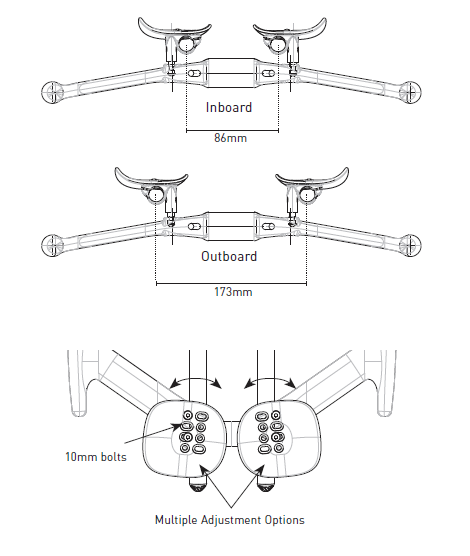
My tape measure confirmed the extension widths, but I also wanted to check out pad width. Each pad carrier has two rows of holes set about 20mm apart. That means that the total change is 40mm between the two settings (you wouldn’t adjust only one). You also get a ~20mm pad width change when swapping between the narrow and wide extension settings. In total, the narrowest setting measures 11cm, and the widest is 19cm (measured in the realistic center of where your arm lays).
This photo shows the narrow extension setting, along with the wide pad setting:
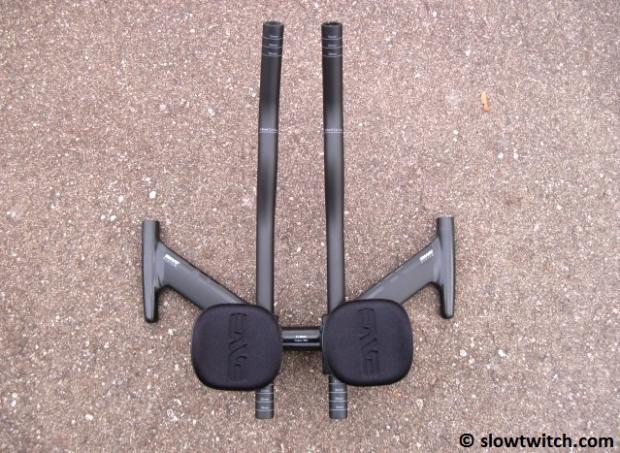
I put this bar in the ‘narrow pad’ category. Its widest setting for the pads is 19cm; a Profile-Design T3+ Carbon measures 18cm at its narrowest. Again, this is neither good nor bad – it just goes to show that one bar does not fit all. I seem to be happy with my pads in the 17-18cm range, so the ENVE bar theoretically works for me. The only challenge is that – within its range of 11-19cm – you must make changes in increments of 4cm. It is 11-15-19 (or thereabouts), with nothing in-between. If I could make one change to this bar, it would be to add a third row of holes to the pad carriers, and make them all closer together for finer adjustment. If I could make two changes, I would add a second base bar width option, as the existing 39.5cm bar is likely narrower than some people prefer.
Conclusion
Is this ENVE bar for you? Of course, fit is first. It must meet your needs in this regard. Among integrated-style bars, it is a real contender. The price is certainly not to be ignored – at $1,365, it sits well above the Zipp Vuka Stealth ($1,150 with extensions), Profile-Design Aeria ($950), and 3T’s Brezza II Nano ($950).
Overall, I think this is a strong first offering for a company with very little triathlon background. I have heard nothing but praise for their road and mountain handlebars, and I imagine the construction of the SES aerobar is no different. The quality and finish look fantastic, and it is knockout gorgeous. The biggest improvement ENVE can make is the communication of the precise fit specs to us Type-A triathletes. A few simple graphics could really clear things up.
ENVE says that they will have some sponsored triathletes on this bar in 2014, and I’m excited to see where they can take the product. Aerobars are an area that can always use fresh minds to help solve the fit puzzle.



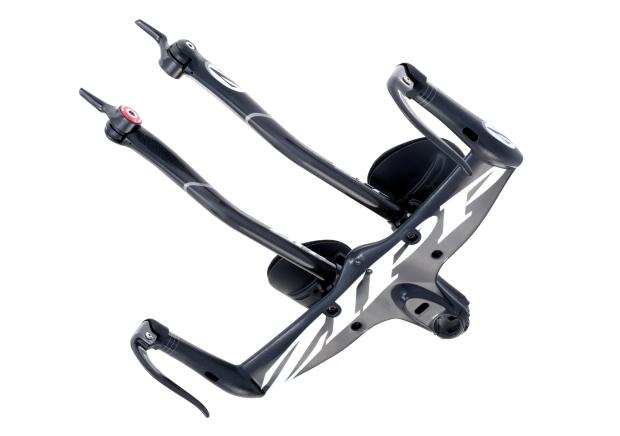
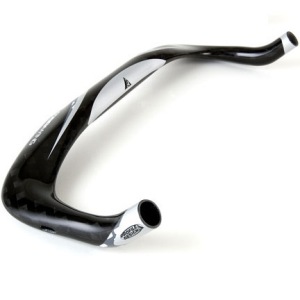
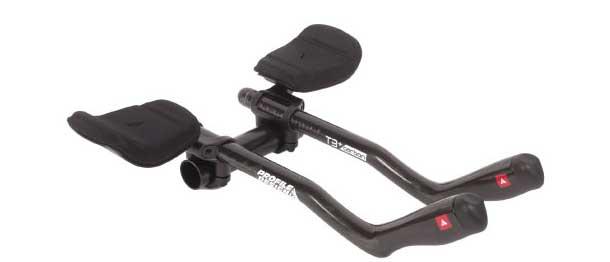
Start the discussion at slowtwitch.northend.network